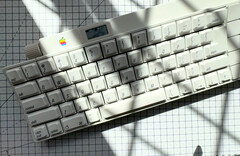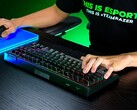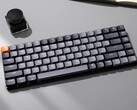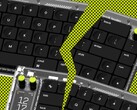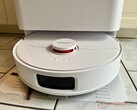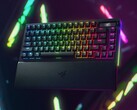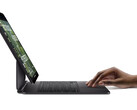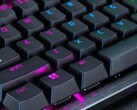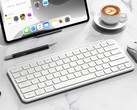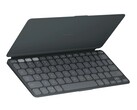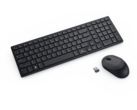Retro mechanical keyboards are all the rage these days, with the likes of the IBM Model M — although not technically mechanical — having gone from e-waste to veritable geek gold in recent years. However, the Model M isn't the only attractive keyboard from the early days of computing.
A small YouTuber who goes by mtt got his hands on an Apple Desktop Bus keyboard (around $100 on eBay) and decided he wanted to use it as his daily driver. Instead of converting it to USB with a simple converter, decided to retrofit the 1986 keyboard with all the bells and whistles of a modern mechanical keyboard.
The project — see the video log below — started with a bit of restoration, using a process called Retrobright to return some of the yellower keys and housing components to their original off-white glory. From then on, the real work began. Mtt's goal with the project was to use a small microcontroller running ZMK to capture the keypresses and output them to a format that a modern computer could read using a USB Type-C connector or a Bluetooth connection.
To accomplish this, mtt resorted to using a ~$25 Seeed Studio XIAO microcontroller for its compact size that would allow it to be fitted inside the top frame of the keyboard. Before he could get started wiring and programming the controller, though, he had to track the keyboard's traces, probing with a multimeter at the end to confirm that he had the correct outputs. After he mapped out the keys, he designed a custom PCB that would slot into the stock keyboard case next to the Seeed Studio and route the keyboard's inputs to the microcontroller.
While he wanted to preserve the original charm and feel of the Apple Desktop Bus keyboard, he also wanted to add features. To that end, he ended up replacing the stock power button with a small programmable OLED keycap — for displaying vitals and switching modes — and adding a rotary knob to the top of the keyboard's case. To button it all up, mtt hid the keyboard's new battery for wireless connectivity under a small stock cover between the alphanumeric keys and the NUM pad.
The end result is a usable keyboard that combines modern features, like programmability, both USB Type-C and Bluetooth connectivity, and an interactive mode switch and programmable volume knob, with the classic aesthetic and typing feel you get from an Apple keyboard with Alps switches.
Aside from 3D printing a few small parts, making a custom PCB — both of which can be ordered off a site like PCBWay — some soldering, and some minor disassembly, the project actually required minimal modifications to the keyboard's housing itself, making it repeatable by basically anyone with some technical knowledge. Mtt has also posted the project files for the build to GitHub for anyone that wants to follow along.




